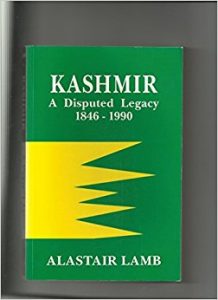Peace Watch » Editor's Take, Kashmir-Talk » Kashmir Resolution and Christopher Snedden’s New Book
Kashmir Resolution and Christopher Snedden’s New Book
PUNCHLINE
Christopher Snedden’s Second Book
By
-
Z. G. Muhammad
 Four years back Christopher Snedden, an Australian political scientist, politico-strategic analyst, academic researcher and author instantly became a familiar name in media and academia in Jammu and Kashmir – on both sides of the dividing line. Moreover, his book, ‘Kashmir the Unwritten History, published in India by Harper Collins, caused a flutter in New Delhi.
Four years back Christopher Snedden, an Australian political scientist, politico-strategic analyst, academic researcher and author instantly became a familiar name in media and academia in Jammu and Kashmir – on both sides of the dividing line. Moreover, his book, ‘Kashmir the Unwritten History, published in India by Harper Collins, caused a flutter in New Delhi.
For its diplomatic and political import internationally, and significance to the Kashmir narrative the book  could be compared to a 1993 book, Kashmir: A Disputed Legacy 1846-1990 by Alastair Lamb. For Lamb challenging the ‘fact and the date of the “Instrument of Accession” supposed to be signed by Maharaja Hari Singh the book published by the Oxford University Press, Karachi had caused a sharp reaction in the diplomatic circles in New Delhi and its circulation initially was stopped. To offset the impact of the book in diplomatic and political circles, some think tanks and journalist were engaged to come up with alternative narratives. In fact, a couple of books defending New Delhi stand on the question of accession of Jammu and Kashmir with the Union of India were authored by a couple of academicians including one by prominent columnist Prem Shankar Jha. Snedden, like Lamb in his very well researched book, has deconstructed the narrative that the landing of troops from New Delhi at Srinagar
could be compared to a 1993 book, Kashmir: A Disputed Legacy 1846-1990 by Alastair Lamb. For Lamb challenging the ‘fact and the date of the “Instrument of Accession” supposed to be signed by Maharaja Hari Singh the book published by the Oxford University Press, Karachi had caused a sharp reaction in the diplomatic circles in New Delhi and its circulation initially was stopped. To offset the impact of the book in diplomatic and political circles, some think tanks and journalist were engaged to come up with alternative narratives. In fact, a couple of books defending New Delhi stand on the question of accession of Jammu and Kashmir with the Union of India were authored by a couple of academicians including one by prominent columnist Prem Shankar Jha. Snedden, like Lamb in his very well researched book, has deconstructed the narrative that the landing of troops from New Delhi at Srinagar  was triggered because of Pashtuns from tribal areas in hordes entering into the State with logistic support from Pakistan. Seeing the revolt as indigenous, he ‘locates it cause in the resistance movement in Poonch and Mirpur by people long disenchanted with the Maharaja Hari Singh’s rule.’
was triggered because of Pashtuns from tribal areas in hordes entering into the State with logistic support from Pakistan. Seeing the revolt as indigenous, he ‘locates it cause in the resistance movement in Poonch and Mirpur by people long disenchanted with the Maharaja Hari Singh’s rule.’
Like Alastair Lamb, after his first well-received book Kashmir continued to hold the interest of Snedden. Some months back his second book, ‘Understanding Kashmir and Kashmiris’, published in India by Speaking Tigers Publishing Pvt. LTD became available in Srinagar also. The book was first published by C. Hurst &Co in the United Kingdom. The 372, page book in addition to Introduction and Conclusion comprises five chapters. For understanding the contemporary Kashmir narrative in its right perspective every chapter is significant. Equally, there is scope for analyzing and debating every chapter and even contesting some of the assertions made by the author. Since this column is not a review of the book, I will be focusing only on chapter five titled, ‘Resolving the Kashmir Dispute.’ This chapter, after seventy years resistance and thirty years intifada- mayhems and bloodbaths assume more significance for the common people deeply yearning for ending the uncertainty.
Since 1947 Jammu and Kashmir has been the fulcrum of the relation between India and Pakistan. Seventy, three days after the birth of the two the state became the cause of conflict between the two neighbors born from the same womb. Just four days after the birth of the Dispute the Governor-Generals of the two countries had a meeting for resolving the dispute by allowing the people to decide their future through a referendum. Snedden writes, ‘the situation changed after India took the J&K issue to the UNSC in late 1947, hoping to get Pakistan’s aggression in J&K condemned. Instead, to India’s chagrin, the UNSC created UNCIP”. After UN-brokered peace ending the first war on Kashmir between India and Pakistan many Indians, Pakistanis and Kashmiris expected a UN-supervised plebiscite would be soon conducted so that people of J&K could resolve their state’s international status.’ It did not happen- who reneged the author has maintained silence on this question instead tells us that by mid-1953, it was clear to all parties that the United Nations was unable to facilitate the holding of people’s plebiscite.’ Instead, of doing an in-depth analysis, the author naively tells us that consequently, the two countries engaged in bilateral dialogue on Kashmir. There was much more to Nehru-Bogra talks than the author makes us believe in- more than anything it was Nehru mindset that was the biggest impediment to the resolution of Kashmir Dispute.
‘Since October 1947, there have been at least 48 small or broad “road maps” given by different entities to resolve the Kashmir Dispute.’ The author in his analysis holds both the countries responsible for non-resolution of the Dispute. Telling us that ‘Pakistan wants Kashmir Dispute to be resolved before all other India-Pakistan issues, the author makes us believe that “Pakistan does not actually claim J&K.” “Pakistan’s long-held position has been that it wants the UN-supervised plebiscite conducted so that the people of Jammu and Kashmir State can decide whether their state, in its entirety, will join India or Pakistan.” He equally tells us that when people of the state decide to join Pakistan. The Constitution of Pakistan under section 257, guarantees ‘relation between Pakistan and the State shall be determined in accordance with the wishes of the people. The inspiration for this section in the Constitution of Pakistan seems in the proposal that M.A. Jinnah had sent to Sheikh Abdullah, through M.D. Taseer and Mian Iftikhar-u-Din in early October 1947- nonetheless, Sheikh had chosen to call on Nehru instead of meeting Jinnah. 
The author has written and analyzed bilateral talks between two countries held at different points in time for the resolution of Kashmir. In interpreting, the Simla Agreement he is on a slippery ground inasmuch as stating that it changed the status of Kashmir Dispute and made it as a bilateral issue between India and Pakistan.
Analyzing the official position of India and Pakistan on Jammu and Kashmir since 1947 and how Pakistan softened its position during the rule of Pervez Musharraf author tells us how the mistrust between the two countries has hampered the resolution of Kashmir Dispute. ‘The vested interests in the two countries have also been ‘ensuring that India-Pakistan relations’ remain poor and mistrust of other continue’. In terms of trust deficit ‘Siachen Glacier’ is the litmus test’. Christopher Snedden makes us believe, “If both the nations can resolve this difficult issue, then all other issues can be resolved”. Looking at the Dispute from various perspective, he concludes, “Both nations cannot resolve the Kashmir Dispute themselves. Perhaps J&K-ites can.”
Towards the end, the Australian political scientist sounds optimists in stating, “History is never static and circumstances can change very quickly. No one can absolutely predict when, and for what reason changes will happen- and they will including in the sub-continent.”
The book is an important read for those interested in Kashmir.
Published in Greater Kashmir on 1-1-2018
Filed under: Editor's Take, Kashmir-Talk · Tags: Alaister Lamb, Christopher Snedden, Kashmir Disputee, Z. G. muhammad







